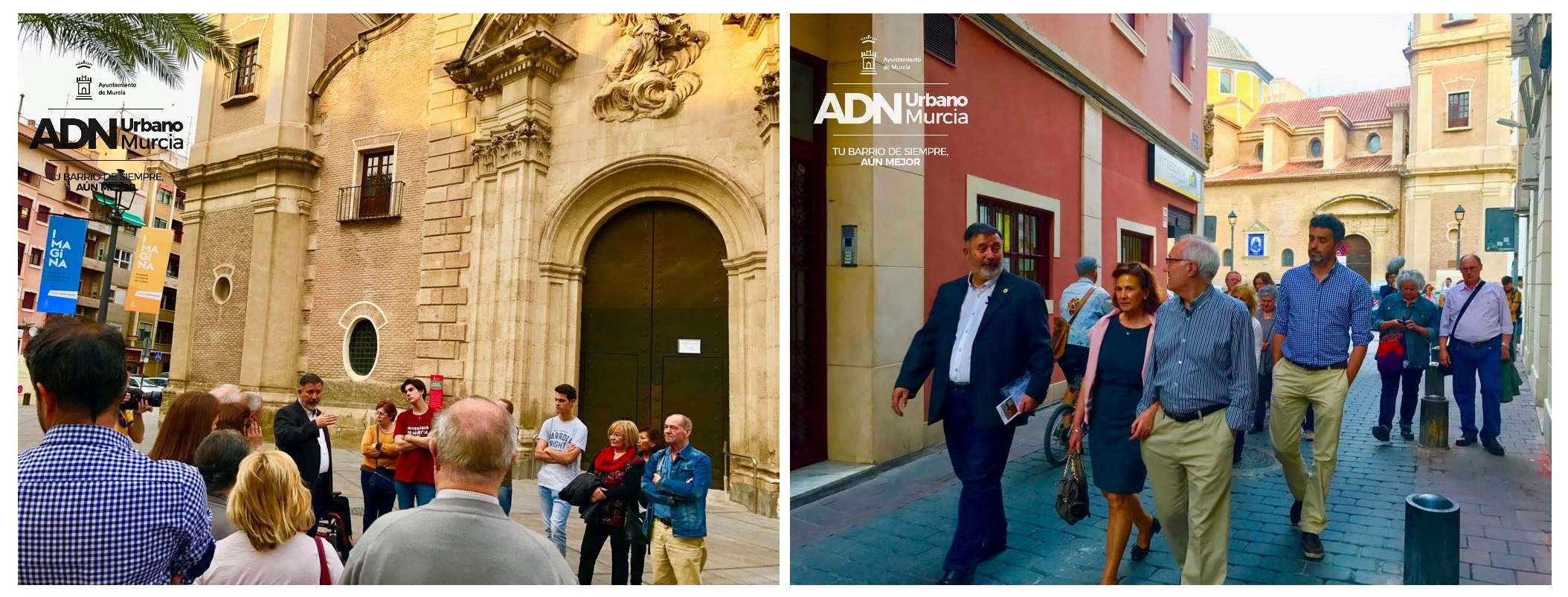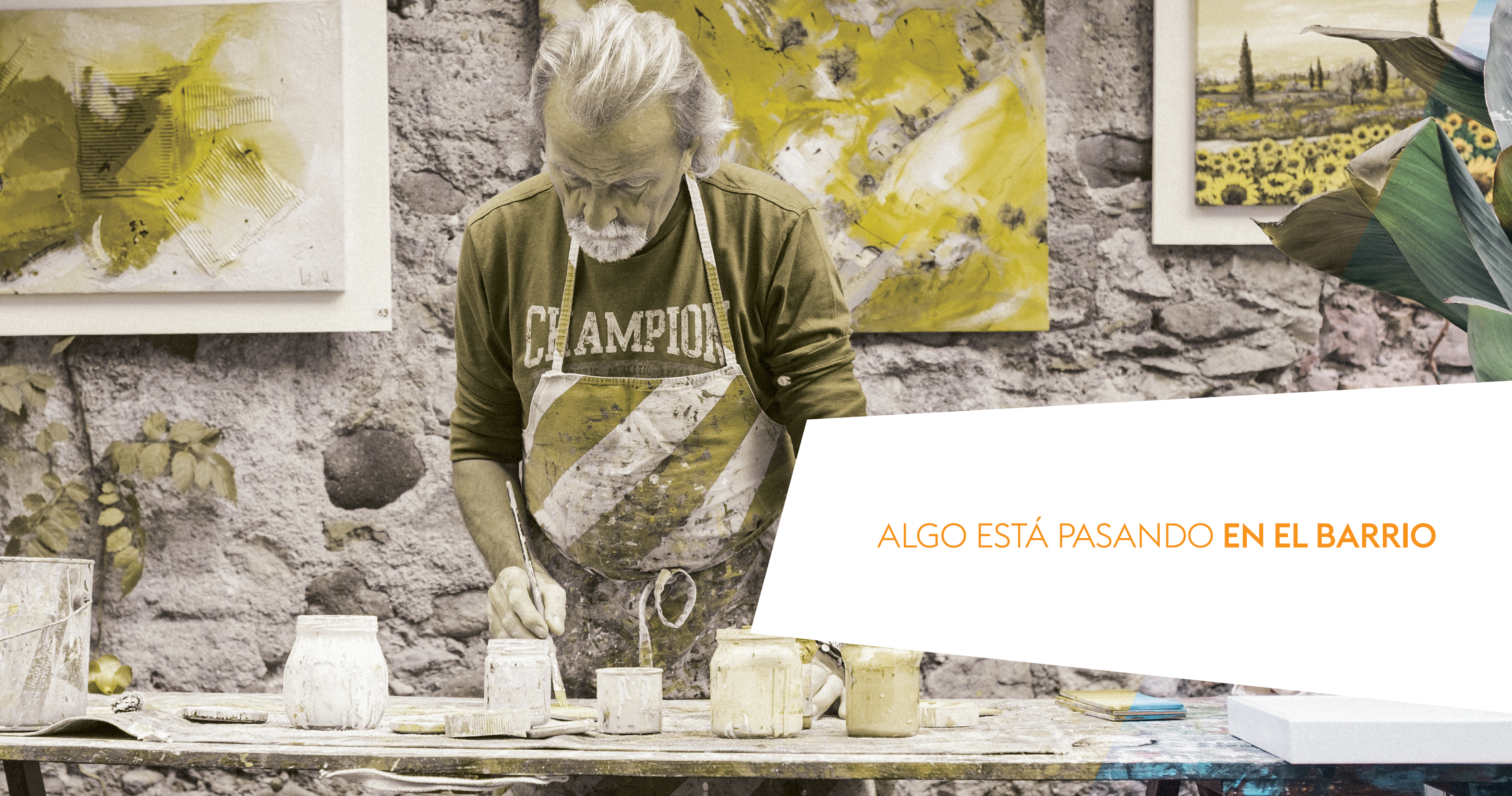Murcia-Urban Social Media Engagement – Santa Eulalia
Edited on
02 October 2018In a large-scale individualized collective action which is essentially a citizen participation project directed at attaining specific insights into adapting the neighbourhood to the citizens who inhabit the physical space and identify with the area, we can discern that it is often coordinated, as in this case, through digital media technologies, such as social networks. As socially speaking there is a constant fragmentation of audience groups (self-identified, not targeted) and the decline of “group behaviour” has given rise to an era of personalized politics and communication strategies in which individually expressed personal action contexts displace collective action contexts in many different situations that call for action, collective or individual, creating another collective of all participants and therefore a new belonging (identity) –e.g. “I feel part of this (project)”, “I am actively (participating in) improving my neighbourhood”.

This tendency can be observed in the increase of large-scale, rapidly forming (political) participation aimed at a variety of targets, ranging from governance to brands, NGOs, and in this case a neighbourhood, place of belonging, identity and integration (active or not). Diverse actions and processes (calling for participation) in which individuals are mobilized around (personal) values and are asked to engage with multiple causes -generally of a social, economic or political nature -, have failed or succeeds to various extents, also depending on the projected goals. In our case, the Santa Eulalia Citizen Participation Process offers one clear distinction to other inclusive action programmes: it’s about identity and environment (surroundings) and citizens tend to care about the aspects that most affect their everyday life.
 |
All the communication networks employed by Murcia City Hall provide access to a municipal institution, services and leaders in the social, environmental and economic development of the City. It does this especially through social media, which comprises a more and more significant part of our everyday interactions.. It does so through all official channels, channels that exist and have been established for quite some time. The main focus for the ADN Urbano project (Urban DNA) was to employ a specific set of social media tools that allow us to channel all communication related to the project in a single place of reference which is the reason the specific social media channels solely centre around ADN Urbano, and in this case the neighbourhood where the citizen participation process and posterior intervention will take place, Santa Eulalia.
The main focusses of City Hall in all communication, without going into details extensively, could be considered: 1) providing high quality service with a citizen focus and manage the resources in our trust efficiently, responsibly and effectively, 2) encouraging a climate of transparency, innovation and citizen participation where the city maintains a honest and open communication, 3) a sense of identity, belonging and conjoined work on a daily bases to turn the City of Murcia into a better place for its residents and to improve their quality of life, 4) our commitment to providing relevant and accurate services, information and representation in such a way that municipal services are accessible, creative, coherent, and timely for our citizens, and finally 5) meet the information needs of a diverse and dynamic population.
 |
As we mentioned before, in this specific project Murcia City Hall has opted for a singular and modulated communication approach generating content on social networks. Since the area in which the social networks operate is a highly specialised one, in the sense of the targeted audience being 1) residents of the Santa Eulalia area, 2) citizens willing to participate in the citizen participation process, 3) citizens interested in being informed about the citizen participation process and the interventions that will take place -including interested parties-, 4) citizens of Murcia city centre, 5) citizens in general.
The content used on Social Media is of a high quality and meets certain standards (relevant, interesting, checked source, neutral informative stance, no re-posting, no advertising, etc.) which our followers appreciate, expect and demand, combined with the communication necessities of the project which needs to clearly profile and extend knowledge of the actions, purpose, activities, etc. to the target audience. This is a key building-block for consolidating our follower-bases and experiencing quality growth. The ADN Urbano accounts are consistent in quality, in quantity and in subject matter, followers know what they can expect and are being informed, a key-note on this subject is that we are not trying to sell them anything (neither products nor ideas, viewpoints or other). There is a distinct no-spam policy and unrelated subject matter is discarded, as well as official notifications unrelated to the topic strategy which is to centre all attention on the project and the citizen participation process.
 |
This dynamic means that our channels have a high percentage of information, in our case “high-quality information”, as we are trying to explain the processes and philosophy behind the project, as well as emphasise the change it will bring about in the neighbourhood. In other words to explain the Citizen Participation Process and the Full Scale Intervention in detail, so Santa Eulalia residents know what to expect, and how to participate, as we want our citizens to play the main part in the transformation of their surroundings. This will enable them through expert and technical advice, and answer any questions they might have.
This does imply, in a general sense that a relatively low amount of “feel-good” content is published, which reduces the “shareability” of the aforementioned content, the initial approach is to focus on the quality of the posts and the loyalty of the follower-base. This can be incremented with quality users, and by adding specific people and possible influencers in their own networks, we hope to create a snowball effect, a process that initially starts small and builds upon itself, becoming larger and more influential, so that in time it might form a self-sustaining cycle that reaches its potential target focus-group. The other clear category of content is that of “call-to-action” and posterior conclusions accompanied by pictures taken at the activities, examples include activities for children, urban revisions with specific collectives (e.g. elderly, disabled, etc.), Citying Urban Players, etc.
 |
It is clear that emotions – not intelligence – motivate people, and that communicators are in the business of “emotional management.” Emotions lead to confrontations and dissonance, and taking fast, appropriate actions to pinpoint specific topics and supply the public with information and other content. It is no surprise that everyone has vast emotional ranges, and one approach cannot and never will fit all situations or individuals. Media, and social media, must address people’s emotions rather than addressing only the web of facts that led to those emotions. This is why we use a modified model to accomplish our specific goal: the traditional three steps of emotional management, noting that they will overlap as you try to “frame” human interactions to achieve the best results. This has been adjusted to our specific needs as a communicating entity.
 |
The first step is “Acknowledgement”, to receive the information and content offered, followed by “Self-identification”, where the user internalises the information and/or content and identifies with it on a personal level (because of importance, curiosity, similar interests, personal situation, etc.), and the last step is “Acceptance”, at which point the user (or audience) has a distinct choice to make, to “join in or opt out” (follow/subscribe, or don’t) and to what degree, (a clear example is twitter: just follow, or follow and like). In this aspect the project has a clear advantage in comparison with other channels that are trying to tag along on the “hype-train” (Smart City, Smart Government, Citizen Empowerment, etc.), which is the fact that we can report on our own specific project with activities and citizen implication taking place in our city every single day, another of the channels’ strengths as it grants us the credibility and sustainment needed as well as original content and experiences, being an official outlet in a world saturated by social media.
Kasper van Hout
Urbact Interactive Cities Murcia
Submitted by fvirgilio on
